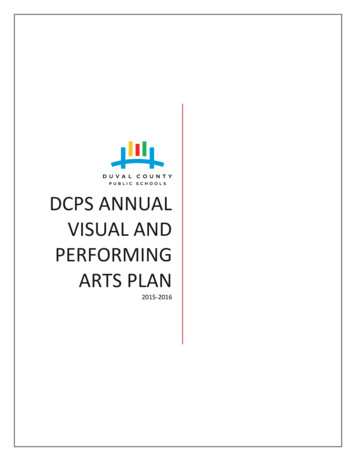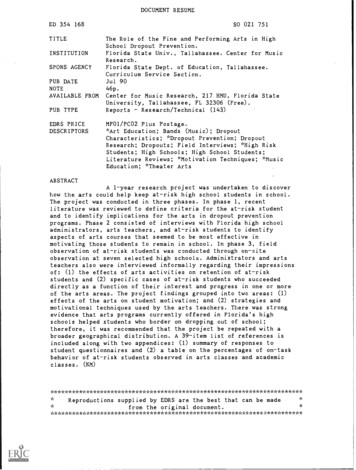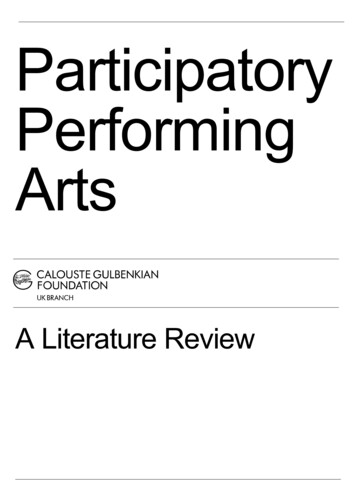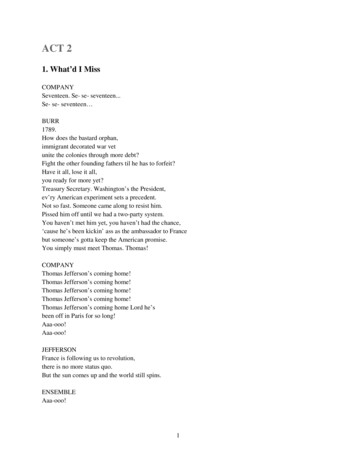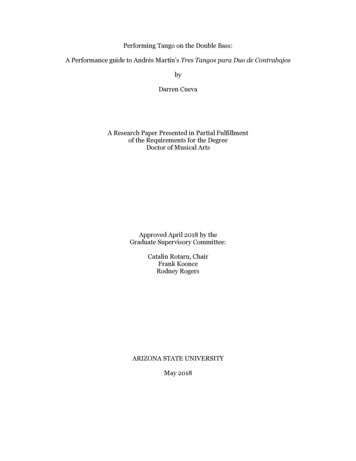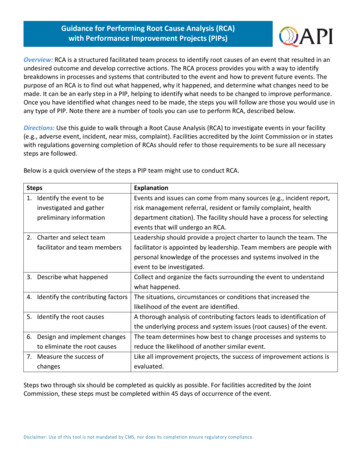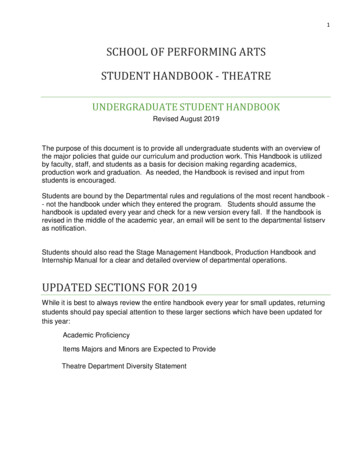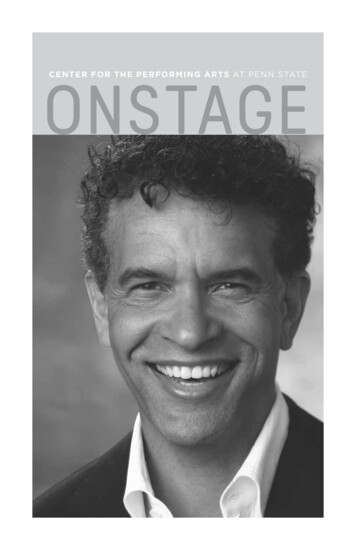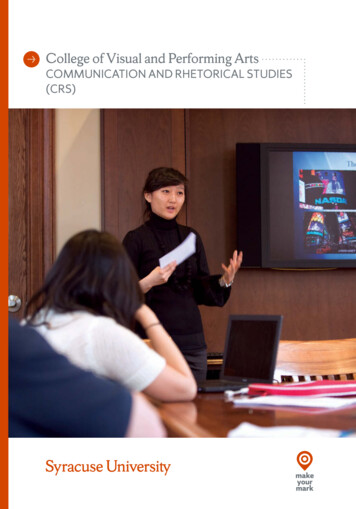
Transcription
College of Visual and Performing ArtsCOMMUNICATION AND RHETORICAL STUDIES(CRS)
AboutAs a student majoring in Communication andRhetorical Studies, you’ll develop skills incommunicative strategy, small-group interaction,political argument, activism, and interpersonal dialogue.You’ll also gain an understanding of communicationtheory, history, and analysis that will prepare you fordiverse professional endeavors and industries.Related CareersYou can easily tailor your communication degree to prepare for multiple careers andprofessions:Political CommunicationCampaign managerLocal or national legislatorSpeechwriterPublic Affairs and AdvocacyGrant writerPublic relations directorMedia and Entertainment ProductionCreative directorTelevision writerTalent agentBusiness and IndustryCorporate communicationsEvent plannerMarketing directorLawA limited number of undergraduate students with outstanding academic promiseare admitted to the CRS combination program with Syracuse University’sCollege of Law. Through this program, your final year of baccalaureate work issatisfied during the first year of law study.EducationCorporate trainerTeacherUniversity administratorsyracuse.edu/arts-performance
CRS students serve on a panel with supermodel Emme ’85.Students talk with Evin Robinson ’12, G’14,founder of New York On Tech nonprofit organization.syracuse.edu/arts-performanceStudent stands at a Pentagonpress podium during a class visit.
Students are mentored by formerNightline anchor Ted Koppel ’60.Students visit the set ofGood Morning America.syracuse.edu/arts-performance
Highlights and DistinctionsImpress employersWhen hiring new college graduates, employers rank verbal communication skills the highestrated and sought-after competency.* Through classroom learning and practical experience,CRS will help you become an articulate and persuasive professional who will stand out amongthe competition.Increase your marketabilityThe CRS major is robust and flexible—encouraging students to challenge and broadenthemselves by designing a curricular vision that combines CRS courses with diverse electives,minors, second majors, and programs from across the University.Learn from the best in the fieldCRS faculty are leading researchers with 30 books, more than 150 articles in academicjournals, two Fulbright Fellowships, and multiple research and teaching awards. In addition,successful CRS alumni return to campus often to provide career guidance and expertise.Research beyond campusGo “inside the Beltway” for an immersive D.C. experience in political communication. Ortravel to the Hollywood archives in Los Angeles as part of a course on the rhetoric of film.Mentoring, internships, and careersWith support from Career Services, network with alumni who work at major companies,including Deutsche Bank, NASCAR, NBC, Disney, Volkswagen, Deloitte, as well as in variouslaw firms, advertising firms, Congress, and the Pentagon.Study AbroadBroaden your perspective and enhance your resume with a study abroad experience.Consistently ranked one of the top international education providers in the United States,Syracuse Abroad offers more than 100 programs in 60 countries.Study leadership and communication in London.Learn about intercultural communication and social media in Madrid.*National Association of Colleges and Employers (NACE), 2016 Job Outlook Reportsyracuse.edu/arts-performance
CRS and Alumni Success“News managers often ask me how I get interviewees to open up on-airand I tell them I identify my subject and audience —something I learnedin the CRS program. Once I understand the lives of the people I cover,it’s so much easier to make their stories matter to whoever sees orhears them.”— Nicki Mayo ’01, multimedia journalist, Associated Press“Being strategic, a strong writer, and a critical thinker—these arethings that in your CRS classes, you have to get down and get downwell, and there isn’t an employer out there who isn’t looking forpeople who can do that confidently and capably.”— Chapin Springer ’04, communications officer, Bill and Melinda Gates Foundation“I was immediately working at our radio station as a productionassistant in my first year. Then I moved up to the vice president ofprogramming and then to producer of the morning show, allwhile applying the skills I learned in the classroom into my work.”— Shannon Peterson ’10, content development and integrated marketingcoordinator, Magnet Media“The way CRS prepared me for my career was that it gave me aplatform and a lens through which I was able to see the world andtruly understand it.”— Terrance Smith ’11, director of residence life, Commonwealth Academy“The fundamental skills that I learned in CRS have been appliedto every industry I’ve gone into and allowed me to really thrive inthat space.”— Evin Robinson ’12, G’14, co-founder, New York On Tech; consultant, AccentureVisit vpa.syr.edu/academics/crs to meet more alumniand learn how CRS prepared them for success.
Quick Facts/Syracuse UniversityFounded in 1870Average Class Size: 26Location: Main campus is in Syracuse, NY,with U.S. centers in New York City,Los Angeles, and Washington, D.C., andseven centers around the world.Research: Syracuse, a Research 1institution, was awarded 79.3 millionin 2016 for research, teaching, andother sponsored programs.Undergraduate Enrollment:14,000 students representing118 countriesStudy Abroad: Program consistentlyranked one of the top in the U.S. Almosthalf of Syracuse students study abroad atleast once.Majors: 200 majors/100 minors within nineundergraduate schools and collegesStudent-to-Faculty Ratio: 15:1Career Placement: 91 percent of 2016seniors responding to the University’sPlacement Survey are employed, joining themilitary, or attending graduate school.Syracuse University is accredited by the Middle States Commission on Higher Education.For information, please visit msche.org or atus.syracuse.edu/arts-performance
Quick Facts/Syracuse University Founded in 1870 Location: Main campus is in Syracuse, NY, with U.S. centers in New York City, Los Angeles, and Washington, D.C., and seven centers around the world.
